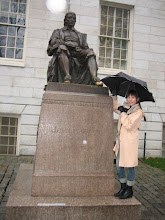Salsa refers to a mixture of informal dance styles having roots in the Caribbean, especially in Cuba and North America. The dance originated through the mixture of Mambo, Danzon, Guaguanco, Cuban Son, and other typical Cuban dance forms. Salsa is danced to Salsa music. There is a strong African influence in the music as well as the dance. Salsa is a partner dance, although there are recognized solo steps and some forms are danced in groups of couples, with frequent exchanges of partner. Improvisation and social dancing are important elements of Salsa but it appears as a performance dance too.
The basic step typically uses three steps each measure. This pattern might be quick-quick-slow, taking two beats to gradually transfer the weight, or quick-quick-quick allowing a tap or pause. It is conventional in Salsa for the two musical measures to be considered as one, so the count goes from 1 to 8 over two musical bars. The basic movement common across most Salsa styles is to step quick-quick-slow 2 times over two 4-beat measures. Typically the quick steps are on beats one and two, and the slow step is actually a quick on beat three followed by pause or tap on beat four. That is salsa step right-left-right-pause/tap then left-right-left-pause/tap.
For the lady step
Salsa basic step started with both foot stands together
The basic backward step:
Stepping backward with your right foot (1)
Returning your weight to your left foot (2)
Returning your right foot to where it started (3)
Tap or pause in place with your left foot (4)
The basic forward step:
Stepping forward with your left foot (5)
Returning your weight to your right foot (6)
Returning your left foot to where it started (7)
Tap or pause in place with your right foot (8)
The basic step typically uses three steps each measure. This pattern might be quick-quick-slow, taking two beats to gradually transfer the weight, or quick-quick-quick allowing a tap or pause. It is conventional in Salsa for the two musical measures to be considered as one, so the count goes from 1 to 8 over two musical bars. The basic movement common across most Salsa styles is to step quick-quick-slow 2 times over two 4-beat measures. Typically the quick steps are on beats one and two, and the slow step is actually a quick on beat three followed by pause or tap on beat four. That is salsa step right-left-right-pause/tap then left-right-left-pause/tap.
For the lady step
Salsa basic step started with both foot stands together
The basic backward step:
Stepping backward with your right foot (1)
Returning your weight to your left foot (2)
Returning your right foot to where it started (3)
Tap or pause in place with your left foot (4)
The basic forward step:
Stepping forward with your left foot (5)
Returning your weight to your right foot (6)
Returning your left foot to where it started (7)
Tap or pause in place with your right foot (8)































+080.jpg)



